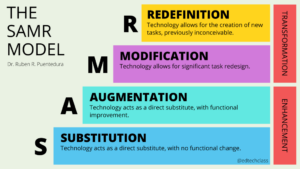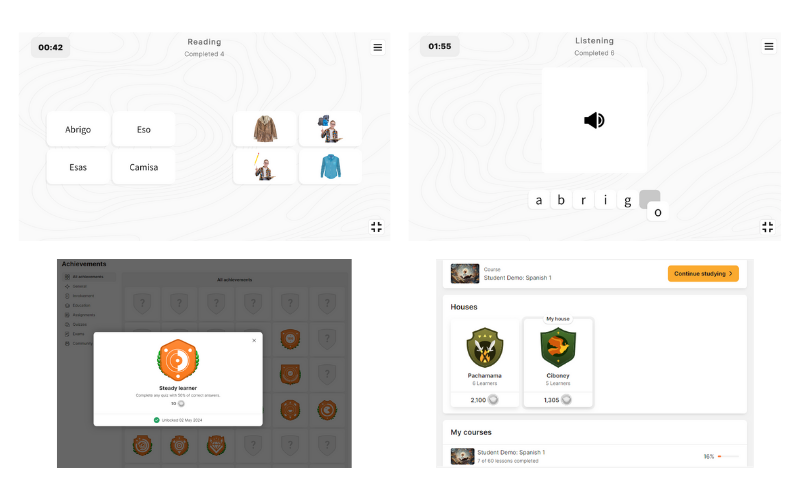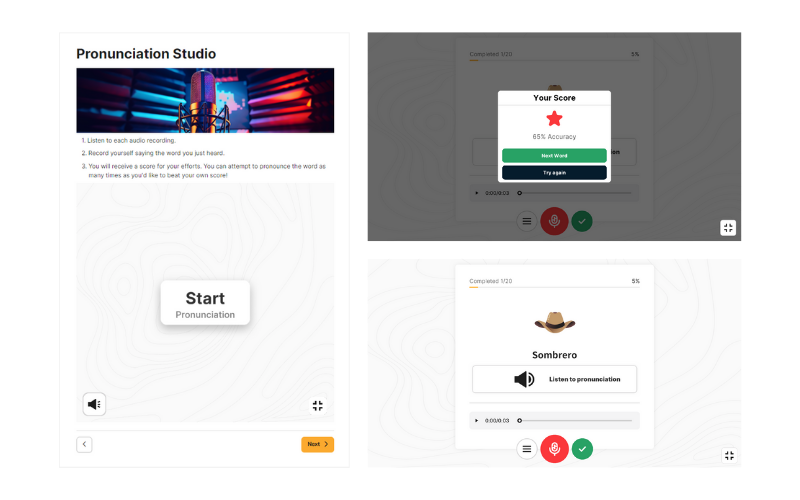A Teacher’s Guide to SAMR, Part 3: Modification
In Part 1 and Part 2 of the series, we took a deeper dive into the Substitution and Augmentation areas of the SAMR Model. Now we are heading into the Transformational section of the ladder—starting with Modification.

Let the Transformation Begin! Part 3: Modification
Modification: This is when we use technology to change the way we do things and make it more effective or efficient. It’s like using a remote control to change the channel on your TV without getting up from your couch.
When I was still in the classroom, one of the classes I taught had a textbook. The online version of the textbook was a PDF of that textbook—nothing fancy, just the text available via the web. The other class I taught had no textbook and relied solely on a web-based platform. The platform was enriched with tons of audio, video, and interactivity built right in. The curriculum and the activities were forward-thinking and ultimately modified the way I taught (and the way my students learned!) for the better.
This is where we start to get into the Transformational power of technology through Modification.
| MODIFICATION | |
| Doing This? Traditional Activity |
Try That! Tech Substitution |
| Paper-Based Portfolios | Digital Portfolios with Multimedia Elements |
| Classroom Presentations | Virtual Reality (VR) Presentations and Simulations |
| Paper-Based Graphic Organizers | Interactive Concept Mapping Tools |
1. Paper-Based Portfolios to Digital Portfolios
Keeping a record of student work is like building a time capsule. The growth that can happen from Month 1 of a school year to Month 10 is incredible. Paper-based portfolios can certainly show that, however, digital portfolios allow students to include multimedia elements that not only help tell their story but also keep them engaged during the work itself.
2. Classroom Presentations to VR Simulations
Presentations have made it to the list in several ways already. Because of the variety presentations can offer, they are a natural area to tweak with tech. When I was teaching Social Studies, I could have just presented the content about Lewis and Clark and then led a classroom discussion. Instead, I found a simulator online that allowed students to put themselves in their shoes just a bit more. Although it wasn’t as sophisticated as what we have access to these days, it made history come alive for the students in a way that was much more interesting and engaging.
3. Paper-Based Graphic Organizers to Interactive Concept Mapping Tools
Graphic organizers are awesome! They are a terrific way to plan for writing assignments, speeches, and larger-scale projects. But in a typical group-work session, the process might look like one partner doing all the writing and everyone else doing all the talking. With interactive concept mapping resources, everyone can do a little bit of everything. Little raindrops of ideas turn into full-fledged brainstorms thanks to the interactivity!
How Meg Supports Your “M” Goals
Do you ever wish your textbooks could come to life? Typically, you only see a vocabulary word with a picture or its translation. Or perhaps you see the words written on the page and take a shot at pronouncing them without really knowing if you’re doing it correctly. Well, at Meg, we want to change this! And because of technology, there are more innovative ways to bring students into the learning and meet them where they are. We are transforming traditional learning through gamification and dynamic multimedia.
Learning Arcade
Much like the language drills you might run in a lesson, our Journeys Learning Arcade is designed with learning through gamification in mind. Students are encouraged to review regularly through Reading, Listening, and Translating activities–and thanks to the gamified interface, what was once a monotonous and dull experience becomes an engaging one. Students review recently learned language and are introduced to related terminology they have not been exposed to yet as a way of making connections between familiar and unfamiliar vocabulary.
The different modes utilized throughout the Learning Arcade coupled with visual cues support a robust, scaffolded learning environment. As a bonus, the more time they spend with the activities the more encouragement they get along the way through Badges and Leaderboards.

Pronunciation Studio
It used to be that the only one who could give you feedback on your speaking skills was your instructor, but not anymore! There are tech tools like the Pronunciation Studio in Journeys that can give you real-time feedback on the accuracy of your attempt to speak the target language. Students can engage with their own learning by evaluating their performance, becoming more aware of mistakes, and making targeted improvements to their pronunciation by re-recording. This is a great, low-stakes way for students to see how they are doing every step of the way.

With Substitution, Augmentation, and Modification under your belt, you have officially enhanced your classroom with tech. You are now ready to take the next step into truly transformational learning with technology! Stay tuned for Part 4 of the series to learn how Redefinition can support you and your learners. Missed our Augmentation post? Check out Part 2 of this series here!

Emily is the Client Solutions Manager for Meg’s US and UK markets and is based in Nashville, TN. Prior to moving into the world of EdTech, Emily spent 11 years in the classroom, teaching both music and Social Studies. Her experience ranges from early childhood education to adult professional learning. An eternal learner herself, Emily enjoys making connections through education in an effort to better understand others and the world we live in. Connect with her on LinkedIn.
Share this post

